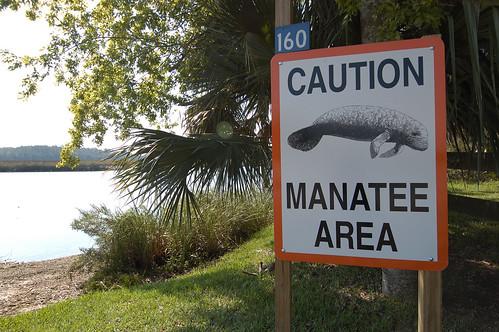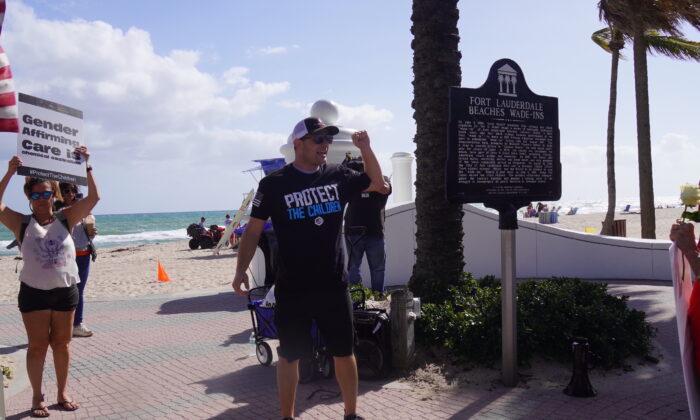PUNTA GORDA, Florida–The program to feed lettuce to starving manatees is scaling down as the weather gets warmer, The Florida Fish and Wildlife Conservation Commission (FWC) said on March 23.
“Efforts are being made now to sort of scale down some of the operations,” Scott Calleson, an Ecological Services officer in the Florida office of the U.S. Fish and Wildlife Service, said in a Zoom call. “We’re continuing to feed out lettuce at the site and we have been making plans for how we’re going to transition down to demobilizing.”
“We will probably reach 200,000 pounds of lettuce by the end of March,” he said.
As the weather gets warmer, the manatees are beginning to “fan out from warm-water sites,” Calleson said. Unlike whales, manatees do not have blubber to insulate and protect them against the cold elements; they are mostly muscle.
After spending half a century on the endangered list, in 2017, the animals were designated as threatened. However, Carli Segelson, FWC communications director, said that by fall of 2022 that designation may be changed back to endangered.
In years past, the greatest number of manatee deaths were attributed to injuries from watercraft, but starvation is rapidly taking that place as FWC necropsy data shows that many of the starving animals have resorted to ingesting sand off the sea floor in an attempt to survive. Many of the casualties are lactating mothers that require higher caloric intakes while nursing their calves for a year.

The manatee’s main food source, seagrass, has been nearly wiped out by pollution such as failing septic systems, urban sprawl, and fertilizer runoff causing damaging nutrients to drain estuaries of necessary oxygen for plant life to prosper. In order to find solutions to aid starving mammals, in 2021 FWC partnered with the U.S. Fish and Wildlife Service (USFWS), working together to combat what they call an “Unusual Mortality Event. (UME).
Mid-January of this year brought record low temperatures to the Sunshine State, and scientists and researchers decided to break their own rules by hand-feeding the manatees heads of lettuce to save them from starvation. They were careful, however, not to allow the manatees to associate food with humans and then not migrate north when it was time. At feeding time, they hid behind a protective screen. FWC warned the public that feeding the manatees is against the law and “authorities won’t hesitate to prosecute.”
The beginning of the program was bleak as the manatees, accustomed to submerged seagrass, did not recognize the floating heads of lettuce as a viable food source. However, FWC researchers and scientists were encouraged during the last days of January, as the lumbering herbivores began to eat the lettuce.
FWC said 160,000 pounds of lettuce has been provided to the manatees with “very little waste,” with an estimated 25,000 to 40,000 pounds more to go before the end of the program for the winter. Calleson said only $250 has been spent on the lettuce program, which has run “mostly off of public donations.”

courtesy of USFWS
Since the program is winding down, the group has not ruled out continuing to feed next winter.
“The effort was designed as a winter intervention to help get the animals through the winter,” Calleson said. “There was very little food to get them through the winter–we want them to fan out so they can find vegetation in other areas. Our intent at this point is to watch the weather, and once we’re comfortable that we’re through the winter, we will stop probably in the next two weeks and then monitor them as we normally would.”
The best way for Floridians to help manatees is to report distressed, dead, or tagged animals by calling the state wildlife hotline at 888-404-3922. FWC reminded boaters to be on the lookout for manatees as they migrate north for the summer.
(Nanette Holt contributed to this story.)





